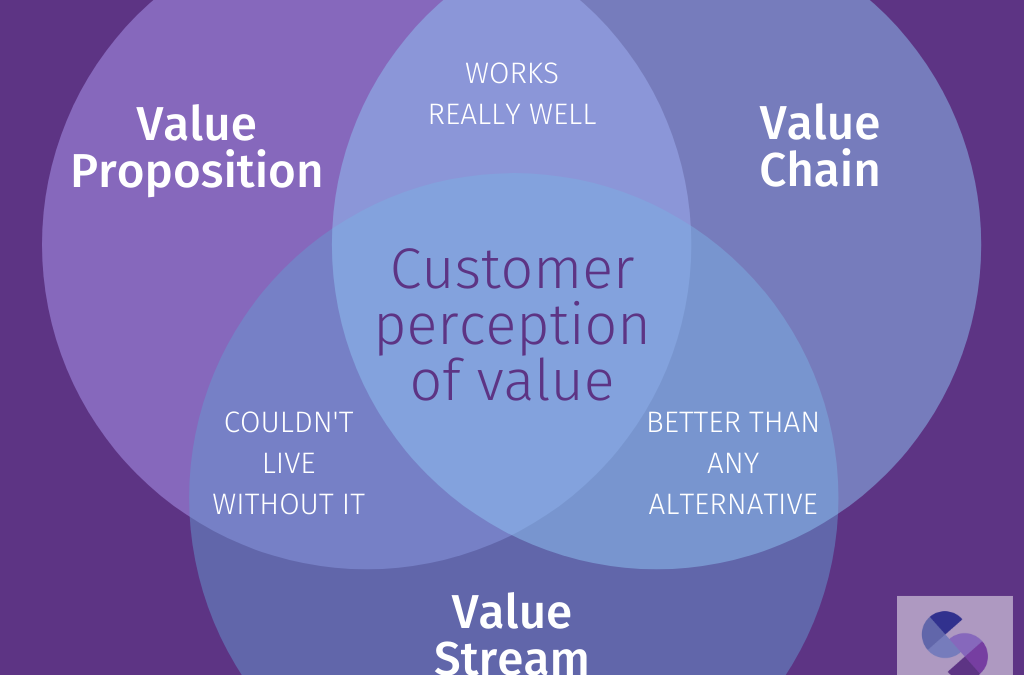The word “value” is thrown around a lot in business, and I always think that the more a word is used, the more its meaning is lost. Consumers have a perception that value means “value for money” and therefore “low cost” and when that perception is transferred to a business setting, the pursuit of that type of “value” can take you in the wrong direction. It’s interesting that I‘ve mentioned how the word “value” is perceived because in fact, the true meaning of the word is rooted in perception.
So looking at value as a measure of importance or usefulness; you might assume that the customer is the one who decides the value of something. The amount of value someone places in your product, service or business directly relates to how well you solve their problem or address their need. But as with any definition, there are layers of complexity. In business, the customer is not always the user and the consumer is not always the decision maker. So who decides the value? If value is about worth, how can “good value” be something that is cheap? Well it’s isn’t – or at least, it shouldn’t be.
In this article, I’ll look at the ways value is interpreted in business, and the different ways you can choose which aspect of your service to focus on in order to maximise on the value you deliver to your customers.
A Value Proposition [value = usefulness, effectiveness]
A value proposition is where you tell your customers, in one sentence, which problem you solve for them. For example “You are a person who needs to do X. Well with our Y, you can reduce the time it takes to X by half”.
Here; value is about how well your solution works for the person with the problem. Of course the cost of such a solution is a factor, but the determination of “value for money” is entirely influenced by how important it is for that customer to address their need better, quicker, easier, for less than they’re paying now, in fewer steps, in a more sustainable way….whatever it is.
The Value Chain [value = competitiveness, effectiveness]
A value chain analysis is a model developed by economist Michael Porter. It enables the user to determine how the different activities in a business directly and indirectly support the delivery of their product or service. This allows you to determine which activities contribute most meaningfully to the “value” that product or service offers. This decision-making framework helps focus investment (of time, resources and expertise) into the areas that will generate most competitive advantage. As we saw in the previous section, the effectiveness of the solution is in the “eyes of the beholder”. Value in this context is still how well the product or service does what it is supposed to do. However, by using a value chain analysis, the effectiveness of the solution is held through a lens of competitiveness and providing a better solution compared to others.
Value Stream [value = usefulness, competitiveness]
A value stream map takes one process within a business and interrogates its effectiveness. It looks for ways to add value by optimizing the various steps in the process of producing the offering. A value stream looks at improving turnaround time, efficiency, quality or resource allocation. It’s no surprise that the value stream map is a tool derived from LEAN manufacturing process but understanding how to make value-adding optimizations within a process is helpful to any type of business. While the end result might be a better product – the value for the customer here is likely to come in the service experience whether through increased reliability, more control for lead times, fewer faults, or indirect cost savings. Here the value is less concerned with how well the product performs and more on how easy is it to have (or keep using) the product. This makes a business more competitive by capitalizing on what’s working in buyer-supplier relationships.
So as you will have seen – the value placed on our products, services, and businesses relies more on what & how we deliver and less on the price tag alone. When you are exploring the value your business offers, make sure you are looking at value in the right context in order to optimize the effectiveness of these tools.
If you’d like to help your team understand value and apply tools like these to aid in decision making, selling and growth – let CareerSpace guide you on the best training solutions for your business.

